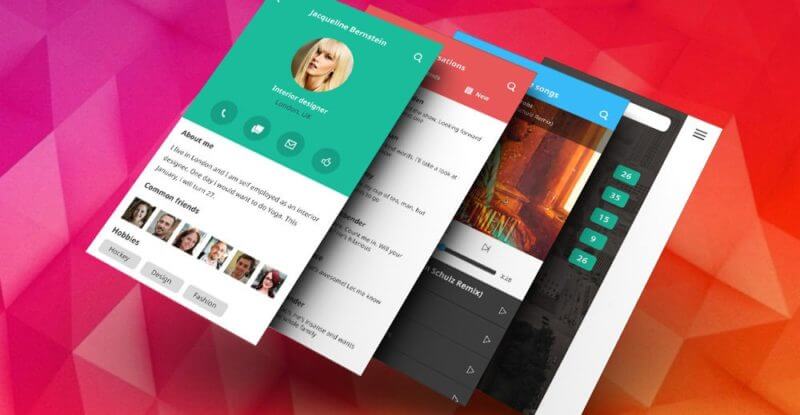“How well we communicate is determined not by how well we say things, but how well we are understood.” – Andrew Grove
Website design consists of different facets such as graphics and interface design, search engine optimisation, conversion rate optimisation, and web programming code all tied together to create the perfect user experience.
The primary aim of a website is to convey intent to the user or visitor to the site. This statement is backed up by Andrew Grove’s quotation mentioned above.
As website designers and UI design services providers, we need to ensure that the user understands what we are saying. Otherwise, there is no point in having a website because it will not provide an optimal user experience and convert visitors into returning customers.
Creating the perfect user experience with the judicious use of colour
Colour is a powerful language when used judiciously as part of a site’s visual appearance. Too little colour can detract from the website’s appeal, while, on the other hand, too much intensity can be overwhelming.
Both of these scenarios will drive visitors away from the site because it is not adding value to the site’s message and intent. Therefore, here are several tips on how to use colour to create the perfect user experience:

Improve the website’s readability
The right colour choices make it easier to read the site’s text and information. It can also increase usability and navigation around the site.
Conversely, the wrong colour schemes can make it harder to read the website content. And they make it more difficult to understand how to navigate around the site.
Essentially, the best colour combinations are designed to create a transparent and congruous style that makes sure that the user knows what is required.
Reflects a brand’s personality
Part of a brand’s development process is to decide on a colour scheme that reflects the brand’s character, mission, and message.
This colour scheme needs to be carried across to the website to ensure that the message remains consistent across all platforms. Or else, the consumer will become confused and move across to brand’s competitors.
Basic colour theory
Different colours have different meanings and implications which send a particular message to the client.
For example, blue can be interpreted as peace, trust, loyalty, and calmness. Black translates into elegance, sophistication, luxury, and power. And, yellow equates to playfulness, enthusiasm, and wisdom.
Influence purchasing decisions
Colour, especially when used in user interface design, is currently used as a primary tool in many companies’ marketing strategies.
Global research companies such as Kissmetrics have determined that the visual aesthetics of a product play a fundamental role in whether a customer will purchase the product or not.
Primary colours, tints, and shades
Best practice UI design says that it is best to only use three primary colours for your website’s basic colour scheme.
The next step is to add tints and shades of these three colours to enhance and add depth to the basic colour scheme.
Finally, finding the correct balance between the three primary colours is critical.
A rule of thumb is the 60-30-10 rule. In other words, 60% of the website is designed using the first of the three colours. 30% of the website is created using the second colour, while the third colour makes up 10% of the site.
Final words
Consequently, it is a good idea to ask a professional design agency such as Polished Pixel to assist with ensuring that your website’s colours add value to ensuring that visitors understand the site’s message and intent.




